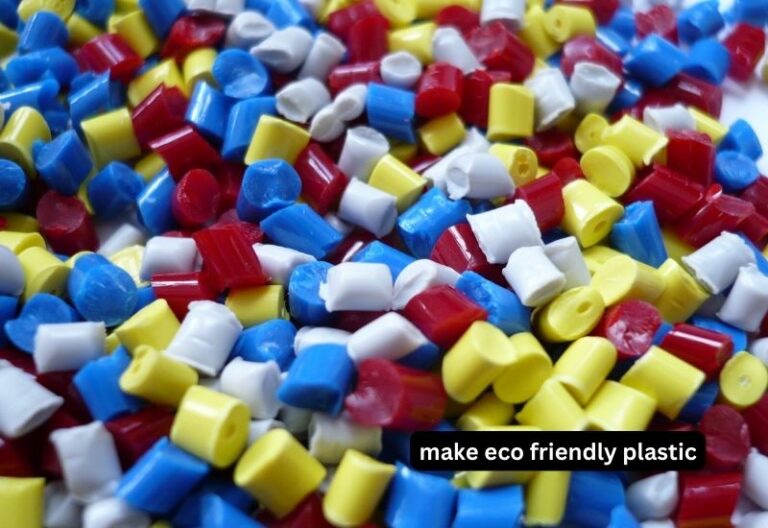how to make eco friendly liquid soap
Looking to make eco friendly liquid soap? It’s easier than you might think! In this blog post, we will walk you through the steps of how to make liquid soap using natural ingredients. We’ll also share some tips on how to reduce waste when making your soap. Liquid hand soap is a great way to reduce the number of plastic bottles that end up in landfills, so let’s get started!
Liquid Vs. Bar Soap, Which Is More Environmentally Friendly?
There is no clear-cut answer when it comes to the environmental friendliness of liquid vs. bar soap. Some people argue that liquid soap is more harmful to the environment because of all the plastic bottles that it comes in, while others say that bar soap contains harsh chemicals that can be harmful to aquatic life.
At the end of the day, it’s up to each individual to decide which type of soap is more environmentally friendly for them. If you’re concerned about the amount of waste produced by liquid soap bottles, switch to a bar soap that can be reused over and over again. And if you’re worried about the chemicals found in bar soaps, look for an environmentally friendly option that doesn’t contain any harsh chemicals
eco friendly liquid soap vs traditional soap:
The four difference between eco friendly liquid soap and traditional soap are:
- Traditional soap is made with harsh chemicals and detergents like sodium lauryl sulfate (SLS) that can be harmful to both people and the environment. Eco-friendly liquid soap is made with natural, biodegradable ingredients like coconut oil that are gentle on both your skin and the planet.
- Traditional soap often contains artificial colors and fragrances which can be toxic to humans and aquatic life. Eco-friendly liquid soap is often scented with essential oils instead, which are safer for you and the environment.
- Eco friendly liquid soap does not contain any harmful chemicals or toxins while traditional soap often contains harmful chemicals and toxins.
Ingredients of Eco-friendly liquid soap :
Ingredients for eco-friendly liquid soap vary depending on the brand, but most liquid soaps contain water, sodium lauryl sulfate, glycerin, and other natural ingredients. Some popular natural ingredients include essential oils, herbs, and botanical extracts.
how to make eco friendly liquid soap
There are a few ways to make eco friendly liquid soap. One way is to use a recipe that doesn’t call for any harsh chemicals or artificial colors. Another way is to use a soap base that’s made from natural ingredients, such as coconut oil, olive oil, or palm oil. You can also buy organic liquid soap that’s already made from natural ingredients.
Whatever method you choose, it’s important to avoid using harsh chemicals like sodium lauryl sulfate (SLS), which is known to be harmful to the environment. SLS is often found in commercial soaps and detergents, and it’s one of the main ingredients that cause pollution when these products are washed down the drain. So if you’re looking for an eco friendly liquid soap, make sure it doesn’t contain SLS.
5 Easy Way to Make Eco-Friendly Liquid Soap:
By following these five easy steps, you can make sure that the liquid soaps you create are kind to both your skin and the environment. Whether you choose to make your own or purchase from an eco-friendly producer, opting for natural products will help keep our planet healthy and beautiful for years to come.
1. Use Natural Ingredients – You can easily make your own eco-friendly liquid soap by using natural ingredients such as olive oil, coconut oil, castor oil and essential oils for scent. All of these ingredients are natural and safe to use on skin, making them ideal for creating a soap that is kind to the environment.
2. Shop Local – Supporting local businesses is also an easy way to reduce your carbon footprint when it comes to liquid soap making. Look for eco-friendly soaps from local makers who use natural ingredients and ethical production practices that respect the environment.
3. Choose Unscented Products – Many scented products contain synthetic fragrances that have been linked to a range of health concerns. To stay eco-friendly, opt for unscented products or those made with natural essential oils.
4. Reuse and Recycle – Whenever possible, reuse old containers for your liquid soap to reduce the amount of packaging waste you produce. You can also recycle any plastic containers that are not suitable for reusing once you have finished with them.
5. Buy in Bulk – Buying your ingredients in bulk is a great way to reduce the amount of packaging waste you generate when making liquid soap. You should also look for suppliers that use eco-friendly and ethical production methods, as this will help ensure your liquid soap is free from any potentially harmful chemicals or additives.
eco friendly liquid soap packaging :
There are a few ways to package eco friendly liquid soap. One option is to use a refillable container such as a reusable glass or stainless steel bottle. Another option is to use recyclable materials such as cardboard, paper, or biodegradable plastics. You can also make your own liquid soap using natural ingredients like vegetable glycerin, castile soap, and essential oils.
5 benefits to using eco friendly liquid soap:
- Eco friendly liquid soaps are free of harsh chemicals and synthetic fragrances, meaning they are less likely to irritate sensitive skin or cause allergic reactions.
- They have natural surfactants derived from plant sources such as coconut oil and palm kernel oil, which provide gentle yet effective cleansing power for your hands.
- These products help reduce water waste by allowing you to use just a few squirts of soap to get the job done rather than having to fill up an entire sinkful of suds every time you wash your hands.
- Eco friendly liquid soaps usually come in biodegradable containers, meaning they break down quickly into harmless substances after being disposed of in the trash.
- These products are also usually vegan-friendly and free of animal testing, making them a great choice for those looking for cruelty-free alternatives to traditional soaps
Faqs for how to make eco friendly liquid soap:
Answer:
Yes, bacteria can live in liquid soap. In fact, liquid soap is a great way to kill bacteria because it’s high in alcohol and other disinfectants. So, if you’re ever feeling like your hands are dirtier than normal, try using some liquid soap to kill the bacteria.
Answer:
There is no definitive answer to this question since there are a variety of factors to consider, such as the ingredients in each product and how it is disposed of or recycled.
However, most experts agree that soap is more eco-friendly than shower gel because it requires less packaging and often contains fewer harsh chemicals. Soap can also be made from natural ingredients such as vegetable oils, while shower gels often contain synthetic fragrances and other harsh chemicals.
Answer:
Traditional soap requires the use of harsh chemicals and lye in the manufacturing process, which can release pollutants into the air and water. Liquid soap, on the other hand, is made from all-natural ingredients like vegetable oils, so it’s biodegradable and doesn’t pollute the environment.
Answer:
One option is adding tea tree oil to the soap. Tea tree oil has antibacterial, antifungal, and antiviral properties. Another option is adding lavender oil to the soap. Lavender oil also has antibacterial, antifungal, and antiviral properties.
final word:
If you’d like to make your own eco friendly liquid soap, it’s easy with just a few ingredients. You can find most of what you need at the grocery store or online. It’s important to be vigilant about reading labels and doing research to make sure the products you select are truly eco friendly. Do you have any tips for making sustainable choices? Let us know in the comments below!


